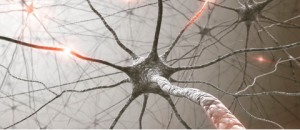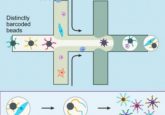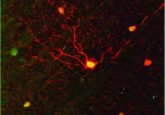Arousal makes it harder to make decisions

New research shows that a state of arousal could alter one of the centers for decision making in the brain, instead prompting it to monitor the body’s internal dynamics.
Arousal, characterized by an increase in heart rate, blood pressure and a shortening of breath, often occurs in anxiety, addiction and other psychiatric disorders. Researchers from the Icahn School of Medicine at Mount Sinai (NY, USA) have been investigating how this state could influence decision-making processes in the brain.
In this study, published in PNAS, the team analyzed data from a previously conducted non-human primate study and determined that the brain is divided into decision-making centers, two of which contain neurons that are solely used for monitoring the internal dynamics of the body. Interestingly, they also found that some neurons, which are normally used for decision making, were reconfigured in states of arousal to also measure the body’s internal state.
“Our results suggest that the brain’s decision-making circuits may be wired to constantly monitor and integrate what is happening inside the body. Because of that, changes in our level of arousal can alter the way that these circuits work,” stated Peter Rudebeck, senior author of the study. “We hope that these results will help researchers gain a better understanding of the brain areas and fundamental cellular processes that underlie several psychiatric disorders.”
The current state of understanding of the effects of arousal on decision making are that it follows a U-shaped curve – where too little arousal leads to incorrect or slow decision making, a little arousal gives a more optimized decision-making process, and too much arousal again leads to a decrease in successful decision making.
In the previous study, three rhesus monkeys were given the choice between two rewards: having a lot of juice, or only a little juice. The monkeys would choose to have the greater volume of juice each time, and when in a higher state of arousal, they generally made this decision faster.
To determine the link to brain activity, the researchers then analyzed the electrical activity from neurons in the orbitofrontal cortex and the dorsal anterior cingulate cortex in the brain.
 Neurons in brainstem linked to opioid overdose
Neurons in brainstem linked to opioid overdose
Researchers have identified the neurons and receptors that are involved in the disrupted breathing that occurs during opioid overdose and have found that blocking specific receptors in these neurons can restore breathing.
Their investigations showed that changes in heart rate correlated with changes in activity in one-sixth of the neurons in these cortexes; if their heart rate increased, the neuronal activity would increase, and the same pattern was true for any decreases in heart rate. The activity of these particular neurons was not disturbed by the decisions made by the rhesus monkeys in regard to the juice rewards, but the neurons that were unaffected by changes in heart rate continued to appear to be involved in the juice-led decisions.
“Brain scanning studies have suggested that bodily arousal alters the activity of these decision-making centers. Our results both support this idea on a cellular level and suggest that the sole job of some these [sic] neurons is to track the body’s internal, or interoceptive, states,” Atsushi Fujimoto, the study leader, commented. “The next question we had was: ‘What might happen during the type of heightened arousal states seen in patients who suffer from anxiety, addiction and other psychiatric disorders?’”
In order to answer this question, the team considered data from after the amygdala in the brain was surgically inhibited in the test subjects. Turning off the amygdala caused a heightened state of arousal in the animals, increasing their heart rates by approximately 15 beats per minute. In this state, the animals were slower when it came to choosing a reward. Investigating further, the researchers found that in the orbitofrontal and dorsal anterior cingulate cortexes, the number of neurons actively involved in the decision-making process were reduced, and in the dorsal anterior cingulate cortex the number of neurons that track the body’s internal states were increased. This indicated a tradeoff of neurons from decision making to monitoring in states of arousal.
“Although not definitive, our results suggest that a heightened arousal state degrades and takes control of the decision-making circuits in the brain,” Rudebeck concluded. “We plan to continue studying how arousal can influence higher brain functions and how this contributes to psychiatric disorders.”





